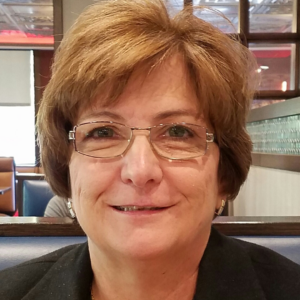Strategies for Identifying and Developing Memory Care Program Activities
Memory care program activities are an important part of providing quality resident care. Identifying, implementing, and evaluating new activities is a continuous and essential process. With activities being an integral part of residents’ daily life, carefully and strategically choosing and designing activities can have a significant impact on the quality of care.
Key Considerations When Identifying Activities for Residents

Natasha Goldstein-Levitas, MA, BC-DMT, owner of EngAge
Natasha Goldstein-Levitas, MA, BC-DMT, is a dance and movement therapist and owner of EngAge, a person-centered, movement, and sensory hybrid approach to healthier aging and dementia support. Goldstein-Levitas explains that it’s essential to consider individual resident preferences when identifying activities.
She recommends that memory care programs consider factors such as a resident’s history, religious affiliations, and personal strengths when determining which activities may be a good fit. “We all have likes and dislikes,” she says.
Giving residents choices is important, too. “When individuals have a stake in anything, I think we’re more likely to want to participate and engage,” she explains. She suggests that staff allow residents to voice their preferences in the ways they can. “Maybe you need to ask more close-ended questions about the activities, but give residents an opportunity to share their voices and choices honoring their personal strengths and expression.”
How staff set the scene for activities plays an important role as well. Goldstein-Levitas notes that arranging chairs into a circle formation can help establish a sense of belonging as soon as residents enter a space, encouraging them to want to stay. Playing background music that the care partners and residents will enjoy can also help.
Activities That Can Be Beneficial for Memory Care Residents
Goldstein-Levitas explains that activities that engage the mind-body spirit can be particularly helpful for memory care residents. “We are human beings, and we all learn and process in our own ways,” she says. “Individuals living with dementia need that support when navigating the environment. Sometimes they need extra stimuli to engage.”
She recommends activities that give residents the opportunity to engage creatively and physically using movement. “Moving the shoulders, the fingers, making faces, and engaging with one another through the physical can really help us to feel more connected to the self. Then, we’re better able to connect with others.”
Goldstein-Levitas also recommends activities including creative arts therapies, cooking, horticulture, live and recorded music listening sessions, and themed seasonal wellness programs. “Activities that are familiar and nostalgic are really key,” she says. “With themed events, we can simulate a day at the beach or going camping.” Programs that engage the olfactory systems, such as cooking or aromatherapy, are also helpful.
How to Incorporate Residents’ Natural Interests into Activities
To identify activities that align with residents’ interests, Goldstein-Levitas suggests that staff get as much information as possible from family members and loved ones. When staff don’t have information, they might make informed guesses, such as guessing what music a resident might enjoy based on their age, culture, or previous occupation. “Our residents let us know when what we’re offering really isn’t a good fit, so we try something else,” she explains. “It’s wonderful when we get a response, even if it’s not the one that we were hoping for.
“The response we get is so valuable because residents are letting us know that maybe they really don’t like what we’re offering. That lets us know where to go next, and it also gives them a voice and empowers them,” she adds. “It’s not always about finding the perfect activity. I think there is no perfect activity or formula, but it’s about finding what’s going to work in the moment.”
How to Use Activities to Support Schedule and Structure
Memory care programs can use activities to support care routines. For example, using appropriate and culturally sensitive music can support program routines, and may also be nostalgic, resulting in decreased stress and anxiety. “Comfort and familiarity are key, and structure is a big part of that,” says Goldstein-Levitas. “Routine programming can reinforce each day’s schedule, while encouraging activity and engagement for scheduled blocks of time.”
It can be helpful to find a schedule that is very similar to what the resident’s schedule might have been before they entered the community. Talking with family members and learning whether the resident was a morning or night person may be helpful.
How to Identify When It’s Time to Adjust Activities
As a resident’s needs evolve and change, it may be time to revisit and adjust activities. Goldstein-Levitas encourages staff to watch for signs that indicate the need to adjust programming, including changes in resident behaviors and moods, residents who become more easily distracted, increased fatigue, changes in sleep habits, and more.
“I think it’s really about staying with the residents and being with them in the moment,” she says. “When we have that rapport and connection with individuals in our care, we’re more attuned to those changes in behaviors and that maybe we need to adjust something. We need to be modifying the activity and programs so that we’re tapping into the individual’s strengths, which as dementia progresses, might be different over time.”
Those changes might include slowing the program down, explaining activities more fully, providing more structure, or offering fewer choices. Program facilitators might need to take a more active role in leading sessions, and residents might benefit from smaller groups or one-on-one interaction in place of larger groups.
It might also be helpful to reevaluate the time of day or days of the week when the activities are offered, and even moving the activity to a programming area with less stimuli.
“I feel that if we have an idea as care partners and we want to incorporate something to see how residents might respond, try it,” says Goldstein-Levitas. “I think wonderful ideas are born out of creativity and each of us trying different things to see what might stick.”
And while activities can be helpful and valuable, Goldstein-Levitas reminds us of the value of simple human interaction, too. “The human piece is so important. We can put a ton of incredible activities in place and set up beautiful communities, but what it really comes down to is focusing on the human connection. Sometimes the best activity is just sitting and listening.”

Paige Cerulli is a contributing writer to i Advance Senior Care.
Related Articles
Topics: Activities , Featured Articles , Resident Care











